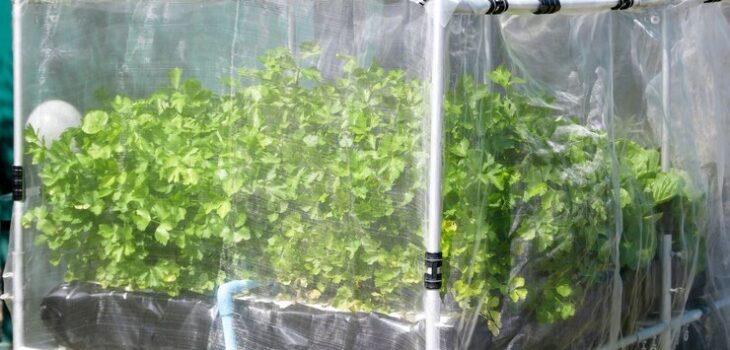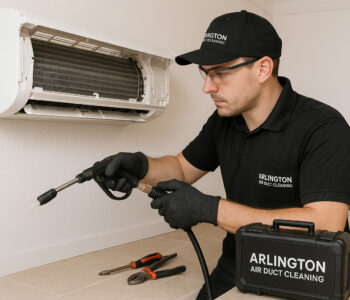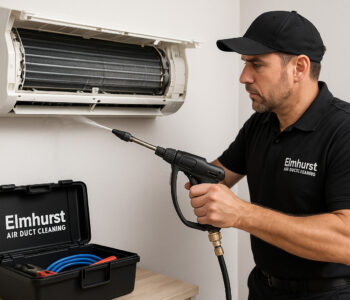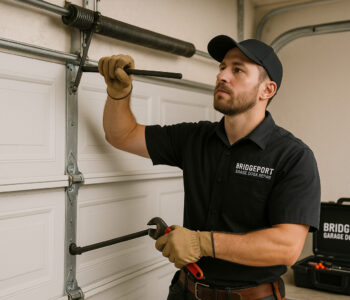 Business
Business
Is a 6 Mil Greenhouse Plastic Good for High…
Greenhouse growers in Long Beach, California a region known for its Mediterranean climate, coastal winds, and occasional storm events often find themselves weighing the durability of their greenhouse coverings. One of the most frequently asked questions is whether 6 mil greenhouse plastic can hold up against high winds and storms. This seemingly simple question unfolds into a layered discussion involving material science, weather trends, greenhouse design, and real-world experiences.
What Is 6 Mil Greenhouse Plastic?
6 mil greenhouse plastic refers to a polyethylene (PE) film that is 6 mils thick (one mil equals 0.001 inches, so 6 mils equals 0.006 inches). It is one of the most commonly used thicknesses for greenhouse coverings in North America.
Key characteristics include:
-
Flexible and lightweight: Easy to install over various greenhouse structures like hoop houses or high tunnels.
-
UV-treated: Most commercial-grade versions are treated to resist breakdown from sunlight.
-
Affordable: Cost-effective for small and large-scale growers alike.
-
Translucent: Allows 85–90% light transmission, depending on clarity.
In Long Beach, where growers operate in both urban and semi-urban settings, 6 mil polyethylene film is a popular choice due to its affordability, ease of use, and general versatility.
Which Factors Affect Wind Resistance of 6 Mil Plastic?
Greenhouse plastic doesn’t function in isolation it interacts with structural, environmental, and material-related variables. Here’s what influences its wind resistance:
Type and Quality of the Plastic
Not all 6 mil plastics are equal. Professional-grade greenhouse plastic often comes with UV inhibitors, anti-drip additives, and tear-resistant reinforcements. Cheap alternatives (like painter’s plastic) may look similar but disintegrate quickly in outdoor conditions.
Greenhouse Structure
The frame that holds the plastic plays a significant role. A strong, anchored, and aerodynamic structure will resist wind better. Weak framing or loose connections can lead to catastrophic failures even with high-quality plastic.
Installation Method
How the plastic is attached determines its performance. Secure fastening using wiggle wire, lock channels, and tight tensioning significantly reduces the chance of wind getting underneath and lifting the film.
Wind Exposure and Microclimate
In Long Beach, wind gusts vary depending on proximity to the ocean, elevation, and neighborhood layout. Greenhouses located in open fields or along ridgelines are more vulnerable than those nestled in protected spaces.
Storm Characteristics
Not all storms are created equal. A gentle rain with 30 mph winds is very different from a winter storm packing 60+ mph gusts. The material’s performance also depends on the storm’s direction and duration.
Who Should Use 6 Mil Greenhouse Plastic in Wind-Prone Areas?
Urban Growers and Backyard Gardeners
Many urban gardeners in Long Beach use hoop houses or mini greenhouses for seasonal vegetables. If you’re not dealing with extreme wind exposure, 6 mil plastic is generally adequate for winter and early spring use.
Small to Mid-Sized Farms
For farmers growing in 30- to 100-foot high tunnels, 6 mil greenhouse plastic offers a good balance of durability and cost. When reinforced with internal bracing and wind breaks, it can survive seasonal storms.
Educational and Community Gardens
Schools, nonprofits, and co-op gardens that may not have large budgets still benefit from 6 mil covers. As long as they follow best installation practices, the material provides enough protection for educational purposes.
Where Does 6 Mil Greenhouse Plastic Work Best?
Coastal Zones with Mild Winds
Neighborhoods in Long Beach closer to the coast like Belmont Shore or Alamitos Beach often experience breezy afternoons but rarely face violent winds. In such locations, 6 mil polyethylene performs reliably year-round.
Sheltered Inland Plots
Growers in more sheltered inland areas like Bixby Knolls or parts of Signal Hill often benefit from natural windbreaks from buildings, fences, or hills. These microclimates are ideal for greenhouses covered in 6 mil plastic.
Protected Greenhouse Clusters
Community farms that use wind breaks, hedgerows, or strategic tree placement to reduce wind speeds will extend the life of their plastic significantly even in high-wind conditions.
Why Choose 6 Mil Greenhouse Plastic?
Cost-Effectiveness
Compared to glass or polycarbonate panels, 6 mil greenhouse film is much cheaper and easier to replace. This matters for growers in Long Beach who may face damage from rare but intense Santa Ana winds or Pacific storms.
Ease of Installation and Repair
One of the strongest arguments for this material is how forgiving it is. If a panel rips, you can patch it with greenhouse tape or install a new sheet in an afternoon.
Availability
Greenhouse supply stores and online retailers (such as Greenhouse Plastic) stock 6 mil films year-round, often with delivery options across Southern California.
Seasonal Adaptability
You can remove the plastic during calm months to extend its lifespan and reinstall before winter storms giving growers more flexibility and control.
When Does 6 Mil Greenhouse Plastic Fail in Wind?
During Extreme Storms
Wind speeds over 50 mph, especially sustained over several hours, can tear or detach 6 mil covers if they aren’t tightly secured or supported.
After UV Degradation
Even UV-treated plastic has a lifespan usually 3 to 4 years. After that, the plastic becomes brittle, making it more vulnerable to tearing during high winds.
Poor Installation
Gaps, wrinkles, and loose edges are entry points for wind. Once a corner lifts, the wind can get under the plastic like a parachute, ripping it off the structure.
Without Wind Breaks
Structures that are fully exposed to open wind without fencing, trees, or neighboring buildings have the highest failure rate in high winds.
How to Make 6 Mil Greenhouse Plastic Storm-Resistant
Use Double Layering
Installing two layers of 6 mil plastic with an air gap (inflated with a blower fan) not only improves insulation but also adds wind resistance by reducing flap and tension issues.
Secure with Wiggle Wire and Lock Channels
Forget nails or staples use lock channels and wiggle wire to firmly hold the plastic in place and prevent it from pulling away during gusts.
Add Cross Bracing
Diagonal cross bracing in your structure helps redistribute wind forces and keep your framing rigid.
Install Wind Breaks
Plant tall shrubs or install slatted fences around your greenhouse. This breaks the wind’s momentum before it hits your structure.
Keep It Tight
A tightly stretched cover resists flapping. Flapping weakens the plastic over time and increases the chance of tears.
Conduct Routine Inspections
Inspect your greenhouse regularly especially after storms. Repair small tears quickly before they expand.
Whose Responsibility Is It to Protect the Greenhouse?
Ultimately, the grower carries the responsibility of preparing the structure for storm season. However, here’s how responsibilities may be distributed:
-
Homeowners or Tenants: Must check for local codes or HOA rules before erecting wind-blocking structures or greenhouses.
-
Commercial Growers: Should have a weather-readiness plan and possibly greenhouse insurance to cover storm damages.
-
Schools or Nonprofits: Need clear maintenance schedules and trained staff or volunteers to respond quickly after storm alerts.
- Greenhouse Manufacturers: Must clearly label products with wind ratings and proper installation instructions.
Real-Life Experiences from Long Beach Growers (2025)
We interviewed several local growers in early 2025 to understand how their greenhouses with 6 mil plastic fared during the winter storms of late 2024.
Marisa R., Urban Farmer in Bluff Heights:
“I reinforced the top with an extra layer before the December storm. The winds were wild around 45 mph but my greenhouse held up. I use wiggle wire and have shrubs planted around the perimeter.”
Tom H., Backyard Gardener in Signal Hill:
“I didn’t secure my ends tight enough, and the wind peeled half the plastic off. Lesson learned install it properly the first time, and don’t rely on zip ties alone.”
Lakewood Community Garden Volunteer:
“We replaced our 4-year-old plastic a few months ago with new 6 mil from GreenhousePlastic.com. It’s still holding strong after three heavy wind events. We also installed mesh fencing to reduce gusts.”
These testimonials confirm the importance of not just the material, but also preparation, installation, and environmental context.
Final Verdict: Is 6 Mil Greenhouse Plastic Good for High Winds and Storms?
Yes with caveats.
6 mil greenhouse plastic is generally suitable for moderate wind conditions and seasonal storms, especially in areas like Long Beach, where extreme weather is infrequent but possible. However, its performance depends greatly on the quality of the film, the strength of the structure, installation techniques, and local microclimate factors.
If you anticipate frequent or intense wind events, consider additional reinforcements, double-layering, or switching to a reinforced 6 mil or 8 mil plastic, which offers slightly more durability without drastically increasing costs.
2025 Considerations and Recommendations
-
Climate Forecasts: NOAA’s 2025 models predict more erratic storm behavior in Southern California due to El Niño patterns. Expect stronger wind events in early winter.
-
Material Advancements: Several brands now offer 6 mil plastic with built-in scrim reinforcement stronger without adding thickness.
- Grants and Support: Long Beach’s sustainability initiative may offer microgrants for urban agriculture perfect for upgrading to better storm-resistant materials.
Conclusion
In the hands of a prepared grower, 6 mil greenhouse plastic can stand up to high winds and storms. It’s not just about the plastic it’s about planning, reinforcing, and adapting. With the right techniques, your crops can stay protected even when the weather tests your structure.
So, if you’re in Long Beach or a similar coastal city, don’t underestimate 6 mil plastic. Just use it smartly, install it correctly, and inspect it often. Your greenhouse and your harvest will thank you.









